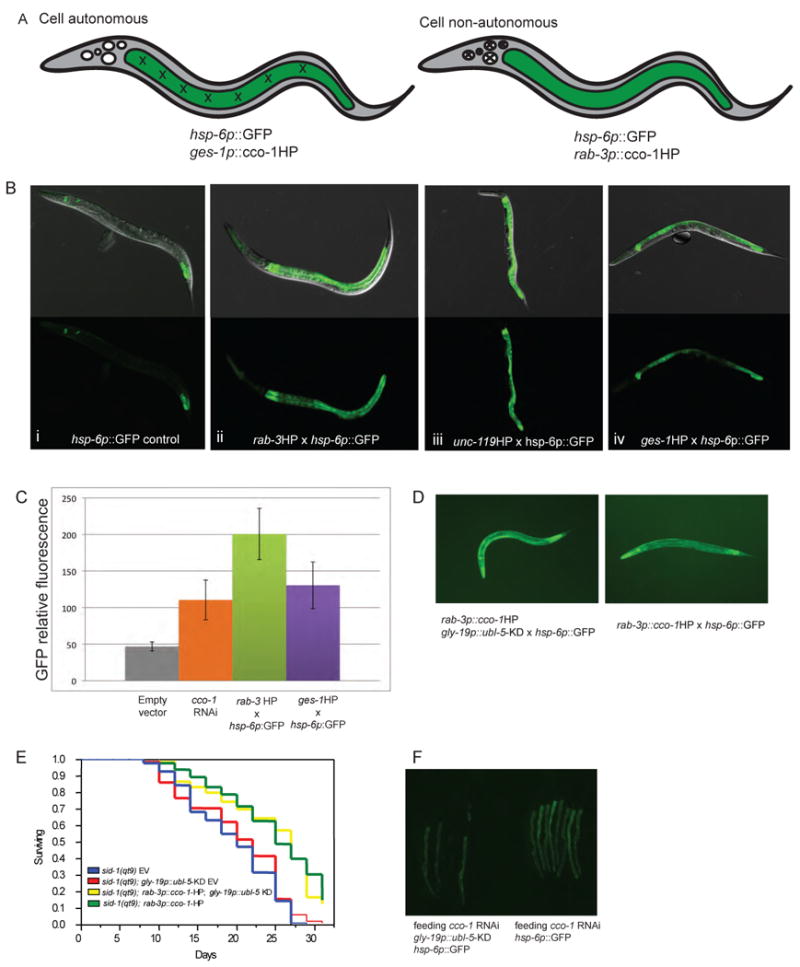Figure 6.

Cell non-autonomous upregulation of the UPRmt.
A. Representation of cell-autonomous and non-autonomous upregulation of UPRmt. “X's” depict tissue where cco-1 is knocked down (intestine or neurons). Green indicates location of upregulation of hsp-6p∷GFP reporter (intestine upon knockdown in intestine or neurons). B. hsp-6p∷GFP reporter worms were crossed to tissue-specific cco-1 hairpin lines. Control hsp-6p∷GFP shows only background GFP (i). Neuron-specific cco-1 hairpin results in upregulation of hsp-6p∷GFP in the intestine (rab-3 (ii) and unc-119 (iii) lines shown). Intestine-specific ges-1p∷cco-1 hairpin (iv) also results in upregulation of the hsp-6p∷GFP reporter in the intestine. C. Fluorescent quantification of B; error bars represent standard deviation (SD). D. Intestinal knockdown of ubl-5 does not block UPRmt induction caused by neuronal cco-1 reduction. Worm strains were created with rab-3∷cco-1HP; hsp-6p∷gfp with gly-19p∷ubl-5HP. E. Intestinal reduction of ubl-5 does not block the life-span extensions of rab-3∷cco-1HP animals. N2 fed empty vector (black line, mean=19.1+/-0.4); sid-1(qt9) (blue line, mean=19.4+/-0.6 days); sid-1(qt9); gly-19p∷ubl-5-KD (red line, mean=20.1+/-0.7 +/-0.7days); rab-3p∷cco-1-HP; gly-19p∷ubl-5-KD (yellow line, mean= 24.1+/-0.7days); rab-3p∷cco-1HP (green line, mean= 24.5+/-0.7days); N2 on cco-1 RNAi (mean= 27.3+/-0.6days. p>0.66 (green vs. yellow)) F. Intestinal reduction of ubl-5 (gly-19p∷ubl-5HP) blocks UPRmt induction of animals fed bacteria expressing cco-1 dsRNA. See also Figure S4.
